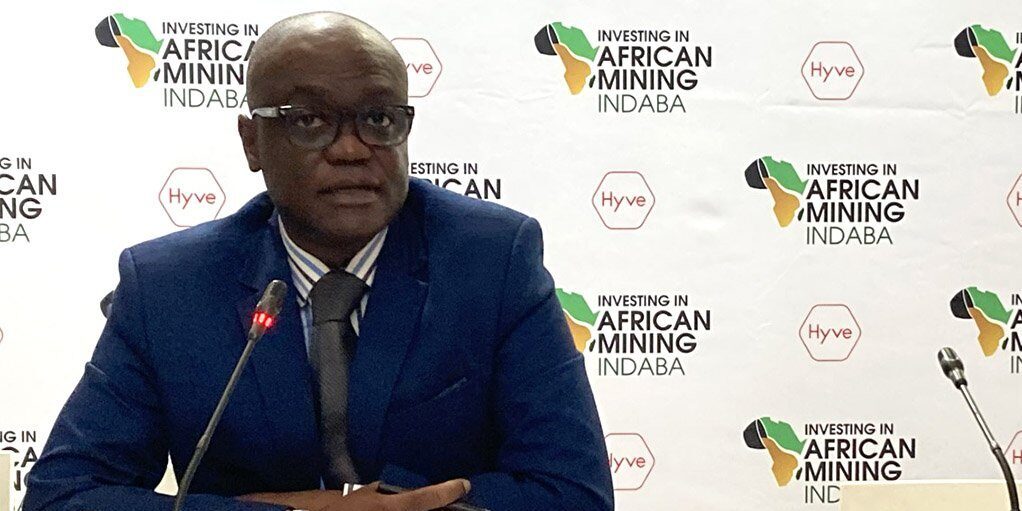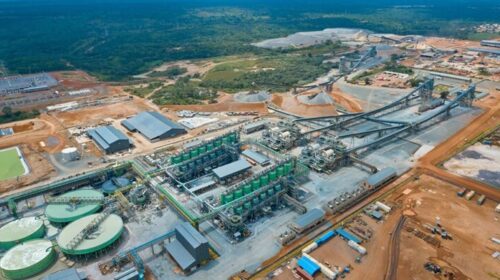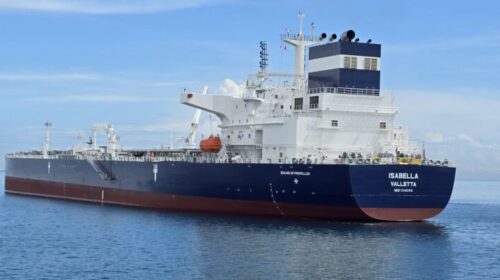LET US ALL BE ON BOARD WITH CATCHING THE COPPER DEVELOPMENT BUS THIS FOURTH TIME AROUND- Eng. Chilembo
Once again, wild anecdote-based assertions and half-truths about mining have crept into the headlines. Dramatic soundbites devoid of fact urge the Zambian public to sacrifice their livelihoods and communities on the suicidal twin altars of “keeping Copper in the ground” and “taxing the mining industry more”.
The recent removal of duties on mining equipment is the latest “unnecessary tax exemption” according to commentators and “experts” who seem oblivious to the decline of mine asset quality across the old Copperbelt for dire want of capital expenditure. Government must be commended for maintaining course and taking bold steps. Especially as the vague criticism comes without any alternative suggestions of how to resuscitate the mining industry and, by extension, the economy.
If proponents of these anti-mining growth views are successful in their fight to keep taxes so high that they repel mining capital, it will be the fourth time in 50 years that Zambia will have made such a strategic misstep only to watch a peer Copper country progress dizzyingly far ahead.
The Zambian public must interrogate such calls that are effectively urging a repeat failure and correct these misguided notions based on the following sobering facts of history which prove that over time competitive tax levels and stable fiscal policy do deliver economic development spectacularly.
According to the United States Geological Survey (USGS) Copper factbook archive in 1969 Zambia, Chile, Peru and the Democratic Republic of Congo (DRC) were leading Copper mining countries. Zambia led the world in output at 824,658 tons, Chile was at 770,593 tons, DRC was at 393,421 tons while Peru produced just 219,143 tons. All four then nationalised their mines.
The first to realise that leaving it to a state company alone was not optimal was Chile under General Pinochet. In 1976 this regime legally opened their country to foreign private mining capital. By the 1980s Chile leaped ahead in proven Copper ore reserves with around 100million contained tons while Peru stood at about 30million tons, Zambia at circa 24million and Zaire (DRC) close to 22million tons.
Had Chile just relied on state firm Codelco the country would only have moved production up from 770,000 tons in 1969 to 1.7million tons today. This figure as reported on the Chile Copper Commission (COCHILCO) website is just 30% of current Copper output. Instead, opening up competitively attracted an average of $400million per year in exploration investment and drew in billions more in production investment from 1982 to 2012 as per the International Copper Associations 2017 economic report on Chile.
In 36 years Chile broke the 5.8milion ton per annum barrier by 2018 to convincingly top world producers. This economic Copper miracle saw it become a developed country by World Bank income standards . That was the first time Zambia missed the bus, that to becoming a first-world country within 50 years albeit for the worthy cause of freeing the continent.
While Chile made its wise move, Peru’s was in civil strife and Zambia was leading the African frontline in a just liberation war with unilaterally independent Rhodesia and apartheid South Africa. Zambia and Zaire therefore understandably clung to the socialist philosophy and all three nation’s parastatal companies struggled under huge financial burdens of state that made re-investment and exploration impossible.
By 1990 Peru’s civil wars were over and elected President Alberto Fujimori’s reforms to the mining sector began. Both Peru and Zambia were so deep in debt that repayments crushed their industries and economies while mining efficiencies dropped due to little if any exploration and capital re- investment.
USGS data reveals that by 1995 Peru’s parastatal mining company Minero Peru had reached 381,000 tons Copper production, very slowly surpassing Zambia Consolidated Copper Mines (ZCCM) which slumped to 329,000 tons. In the mid-90s both countries then changed their laws to attract foreign capital and privatized their mines.
Zambia deviated from the successful privatization era investor attracting policies and began to tinker with its mining fiscal regime from the mid-2000s. As a result, production grew slowly reaching 630,000 tons by 2013.
Peru on the other hand stuck to its 1990s policies with dramatic results as per it’s Institute of Mining Engineers 2020 presentation to the International Mining and Resources Conference (IMARC 2020).
That stability enabled the nation to attract $500million per annum in exploration capital and more than quintuple that in annual mining investment to drive output upward and breach the 1 million ton per annum barrier in 2005. The country then doubled production from 1.3 to 2.6 million tons per annum from 2015 to 2019.
Its mining industry is diversified, growing and poised to give Chile a real run for its money atop the copper league table. By 2019 Peru had a pipeline of 68 mining projects totaling $47bilion in investment value.
It is aiming to hit 5 million tons production per annum in the medium to long term. Zambia has the mineral endowment to have achieved at least half of what Peru has done. In a sobering comparison, the reality is that Peru’s project pipeline alone is almost double the Republic of Zambia’s entire 2019 Gross domestic product which fell behind due to its record- breaking policy changes averaging one every other year.
Meanwhile exploration has also yielded Peru second place in Zinc and Silver production worldwide. Peru has also moved far ahead in the human development indices despite having a population almost double that of Zambia. This is the second copper bus Zambia missed from 1994, that to the upper middle income country status that Peru has today.
By 2013 Zambia and the DRC were neck and neck in copper production at around 630,000 tons per annum. The DRC had competitively positioned its mining fiscal regime during its 2008 privatization and stuck to it for a decade while Zambia’s policy shifting continued being enthusiastically egged on by a range of pundits.
Steady repetition of misinterpreted data inferences drove an incessant chorus of accusations of the mining sector’s massive production understatement along with wildly exaggerated headline grabbing guestimates of illicit financial flows of billions of dollars per annum hemorrhaging the Zambian treasury.
Had these campaigns been accurate then more malfeasance would have been prosecuted than the handful of cases of the last dozen years. These claims completely blurred the policy lens in Zambia while, though similarly challenged, the DRC steadily made progress despite regularly being on the receiving end of one punitive tax or duty after another.
Today the DRC is set to hit the 2 million ton per annum mark in 2023 after from 2008 steadily attracting above $150milion per annum in exploration capital by 2016ivv. This attracted even Zambia resident operators into the DRC’s smelting and processing industry as that country broke its dependency on toll treatment of ore by its policy unstable southern neighbor. This was the third bus we missed, that of being one of only five countries on earth producing more than a million tons of copper per annum.
Zambia is now on the cusp of a fourth failure if those attacking even the first steps taken in the 2022 budget and this recent equipment duty removal have their short-term focused way.
Growth stimulative restoration of mineral royalty deductibility and duty withdrawals are misrepresented as “tax holidays” to self-destructively turn public opinion against making Zambia competitive. This is despite reciprocal investment commitments of $1.4 Billion by First Quantum and planned fourth quarter listings of shares to raise hundreds of millions more in urgently needed capital by Moxico Resources, Mabiza Nickel Mine and Lubambe Copper Mine.
Illogically, more taxation is then prescribed without a care for how catastrophic failure is proving for mining host towns and communities. The International Monetary Fund (IMF) in July 2021 estimated average effective tax rates of 84% for old Copperbelt underground mines and 57% for northwestern province open cast above $150milion per annum in exploration capital by 2016 operators into the DRC’s smelting and processing industry as that country broke its dependency on toll treatment of ore by its policy unstable southern neighbor.
This was the third bus we missed, that of being one of only five countries on earth producing more than a million tons of copper per annum.
This attracted even Zambia resident mines under what is now the 2022 regime. This is versus global averages of 51% for high-cost (mostly underground) mines and 40% for open cast mines. Zambia still falls far behind countries such as Botswana. This neighbor has lower percentage grades of copper but charges lower taxes and has a lower country risk premium of just 2% added to their international cost of capital thanks to pursuing stable pro-foreign capital policy for 50 years.
Zambia’s risk premiums are far north of 10% due to our unstable policy history. Looking at Botswana’s pipeline of Kopano, Khomecau, Boseto, Motheo and Ngami Mines, keeping copper in the ground and taxing mining to death will in three to four years lead to production of over 50kgs of copper per Motswana versus 48kg at best per Zambian if the flat trend here continues.
Zambia will most painfully miss the fourth copper bus to prosperity if deliberate obfuscation of tax adjustment measures as giveaways and ignoring of competitive tax benchmarking empirical fact is neither challenged nor categorized correctly as unproductive reinvention of the wheel.
Zambia cannot afford to miss this greatest green energy and electric vehicle Copper demand opportunity of the last one hundred years. This the chance to attract at least $180milion of exploration capital per year and billions in production investment for the next 15 years to build up copper ore reserves that can sustain governments 3 million ton per annum production goal.
If mining taxes are not made competitive swiftly, the medium-term Copper opportunity will lift Botswana and Peru from upper middle-income countries into high income first world economies while Zambia wallows in downgraded low-income stasis for no better reason than allowing poorly gamed out and researched commentary to distract from what must be done to save our economy.
Zambians must learn from these three missed opportunities that have left us currently envying Chile’s first-world status, Peru’s upper middle-income status and DRCs multi-million-ton copper producer status. Though none of these countries is perfect they are surely far head of Zambia on each of these fronts right now.
Zambians must promote factual common sense and put the sensationalist sound bites and retrogressive wild headlines aside. Instead, all must be on board with rolling up our sleeves to do the work required to ensure Zambia does not miss the development acceleration that the copper luxury coach offers this fourth time around.
Eng. Sokwani W. Chilembo CEO Zambia Chamber of Mines
![]()





